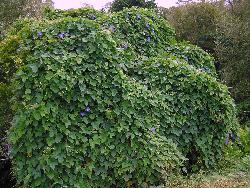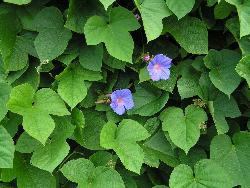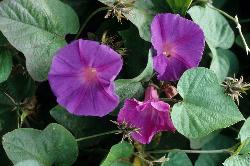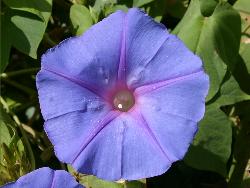- Taxon
- Weed
- Gallery
Habitat: bank, coast, dry, gap, gravel, lowland, margin, open, roadside, sand, shaded, sheltered, shrubland, slope, stone, terrace, wasteland
Dispersal: Seed, vegetative
Recognition
- a showy twining climber or scrambling plant with hairy stems.
- its alternately arranged leaves (5-18 cm long and 3.5-16 cm wide) are either heart-shaped or three-lobed.
- its large funnel-shaped flowers (5-10 cm long and 7-10 cm across) are blue or bluish-purple in colour with pale pinkish centres.
- these flowers have long and narrow sepals (14-22 mm long) and are borne in clusters of two to twelve in the leaf forks.
- this species does not produce viable seed in Australia, and fruiting capsules are rarely seen here.
[From: Environmental Weeds of Australia]
Images
References
Biosecurity New Zealand 2012: Regional Pest Management Strategies Database. http://www.biosecurityperformance.maf.govt.nz/
Biosecurity New Zealand 2008: National Plant Pest Accord. MAF Biosecurity New Zealand, Wellington.
Howell, C. 2008: Consolidated list of environmental weeds in New Zealand. DOC Research & Development Series 292: 42.
Ministry for Primary Industries 23 Feb 2017: Unwanted Organisms Register. Version 02.01.02. https://www1.maf.govt.nz/uor








